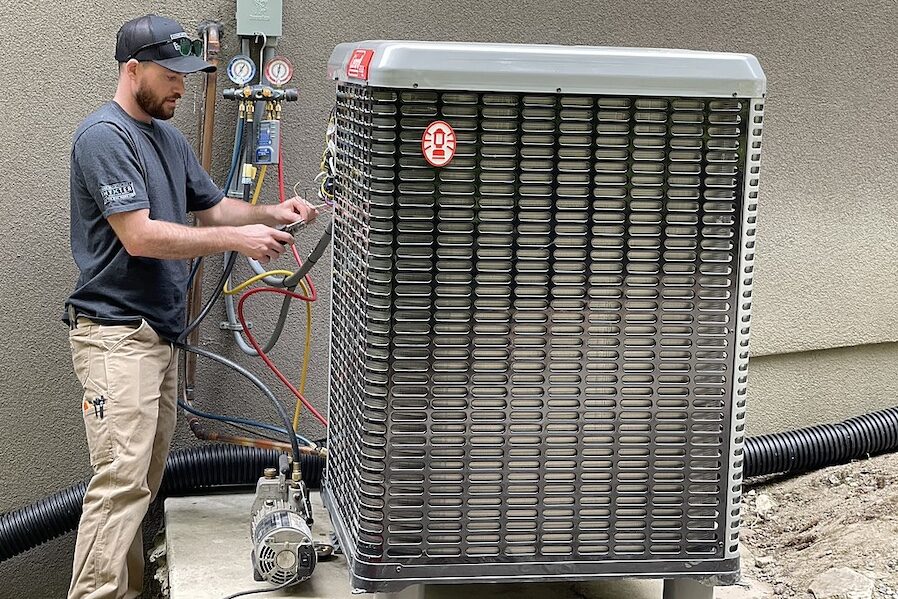
California Unveils ‘High-Impact’ Blueprint to Promote Heat Pumps

Advocates for the widespread adoption of heat pumps in California face a cold reality: The state is currently projected to fall far short of its ambitious goal to have 6 million units installed by 2030.
Trends indicate installations may reach only about 4 million for both HVAC and heat pump water heaters over the next five years. A public-private alliance initiated efforts in early March to unite stakeholders in promoting the technology, which is central to California’s decarbonization strategy.
The California Heat Pump Partnership—a coalition of state agencies, manufacturers, utilities and other industry players—unveiled a blueprint aimed to accelerate adoption in the state, where 1.9 million heat pumps now are deployed.
Group Director Terra Weeks says the organization recognizes the short timeframe, so “our focus is on implementing actionable, high-impact strategies that can be deployed in the near term.”
She says heat pump advocates need to break an inertia caused by “a lack of large-scale, cross-sector coordination” that has hindered widespread adoption.
“The barriers outlined in this blueprint often reinforce each other, creating a slow-moving market,” she says. “Low consumer awareness leads to weak demand, which disincentivizes contractors from investing in heat pump training. In turn, the absence of a skilled and trained workforce results in fewer successful installations—diminishing demand even further.”
Decarbonization Potential
California could significantly reduce use of fossil fuels by replacing natural gas home and water heaters with electric heat pumps powered in large part by renewable energy. The Western Cooling Efficiency Center at the University of California, Davis, says a heat pump can reduce carbon dioxide emissions by as much as 50% over a gas furnace.
The partnership says will launch a statewide campaign using media, influencers, events and digital tools to raise awareness among consumers and contractors. The effort will also leverage “The Switch Is On,” a state electrification marketing platform to connect owners to incentives and qualified installers. A parallel workforce campaign will focus on training and positioning contractors as advocates for the technology. A dedicated Heat Pump Week is also planned to boost visibility and engagement.
Marketing alone won’t close the heat pump gap, cautions Bob Tuck, president of Atlas Heating and Air Conditioning, a 117-year-old residential and light commercial HVAC contractor in Oakland, Calif.
“The field crew can do the work, but give them a design that will work,” he says.
Tuck says heat pump installation uses the same skills as in traditional HVAC, but upstream, estimators need to be better trained on load calculations and duct capacity requirements. Also, manufacturers of heat pump water heaters ducted heat pump systems “need to design more compact units,” he adds.
According to Tuck, the years-long financial payback for heat pump conversion deters low-income households and those who rent to them from making the investment, particularly in the state’s large inventory of older homes, many with poor insulation and lacking central heating.
“We’ve seen many industry changes since my grandfather started Atlas in 1908, and this certainly ranks near the top in degree of difficulty,” he says.
Still, he says gas-to-heat pump conversions accounted for a 30% share of the 400 system retrofits his company completed in the last 12 months, sa figure that is growing.
The 6-million-unit goal dates to 2022, when it was announced by California Gov. Gavin Newsom, who said at the time, “We need to supercharge our efforts to significantly reduce harmful carbon pollution.”
The effort to kickstart heat pump installation in California comes as the federal government takes a hands-off approach to the technology. President Donald Trump on on March 20,issued an executive order that revokes Biden administration actions by to promote the domestic heat pump industry. Four days later, the U.S. Energy Dept. postponed tighter heat pump efficiency standards that were announced in April 2024 and set to take effect in 2029.
But Tuck says deferring tighter environmental rules allows current, less-expensive systems to remain available. “I actually favor more relaxed efficiency standards for heat pumps as another way to encourage adoption,” he says. “The point is to reduce the use of natural gas.”
Post a Comment
You must be logged in to post a comment.





